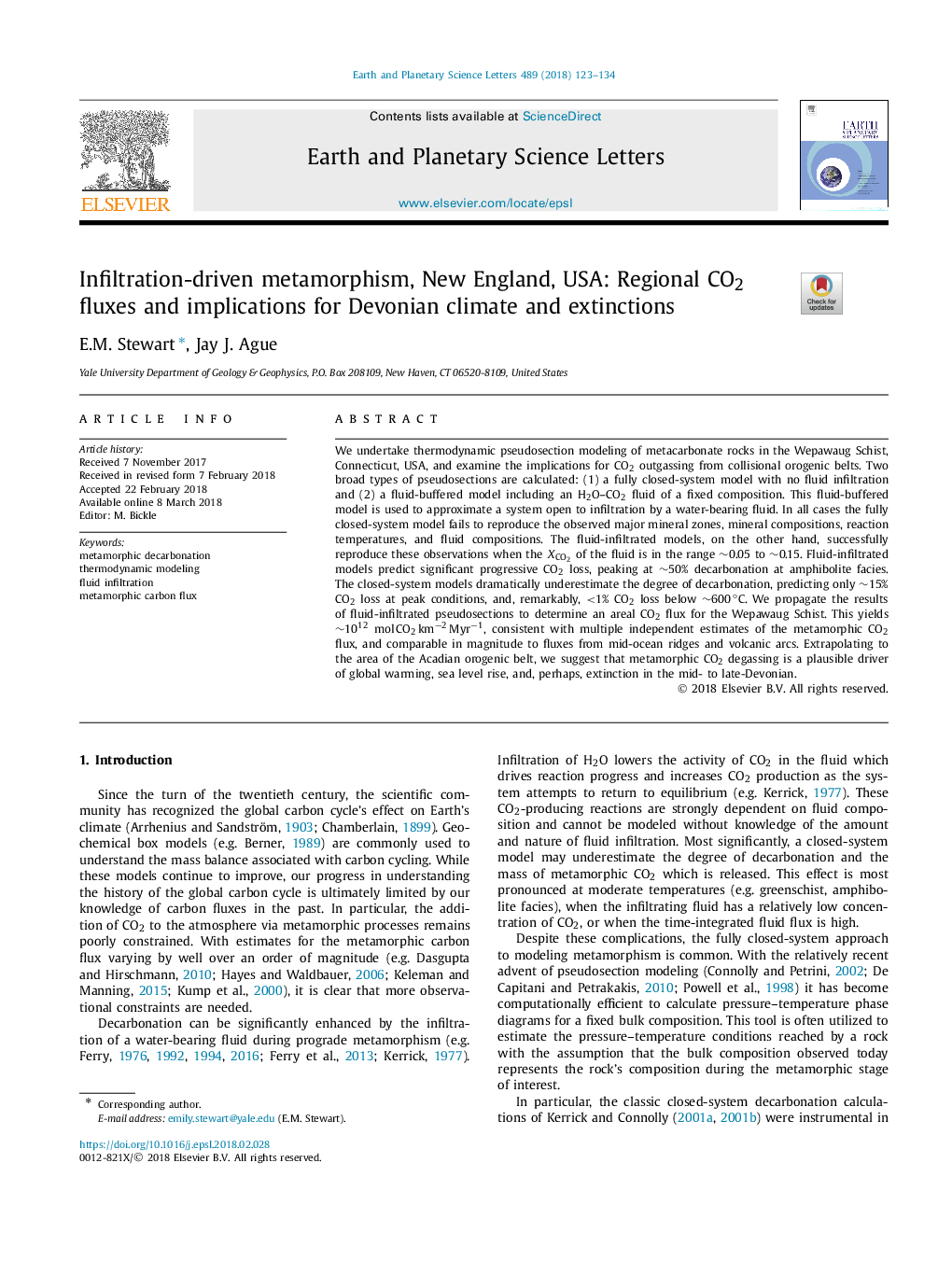| Article ID | Journal | Published Year | Pages | File Type |
|---|---|---|---|---|
| 8907014 | Earth and Planetary Science Letters | 2018 | 12 Pages |
Abstract
We undertake thermodynamic pseudosection modeling of metacarbonate rocks in the Wepawaug Schist, Connecticut, USA, and examine the implications for CO2 outgassing from collisional orogenic belts. Two broad types of pseudosections are calculated: (1) a fully closed-system model with no fluid infiltration and (2) a fluid-buffered model including an H2O-CO2 fluid of a fixed composition. This fluid-buffered model is used to approximate a system open to infiltration by a water-bearing fluid. In all cases the fully closed-system model fails to reproduce the observed major mineral zones, mineral compositions, reaction temperatures, and fluid compositions. The fluid-infiltrated models, on the other hand, successfully reproduce these observations when the XCO2 of the fluid is in the range â¼0.05 to â¼0.15. Fluid-infiltrated models predict significant progressive CO2 loss, peaking at â¼50% decarbonation at amphibolite facies. The closed-system models dramatically underestimate the degree of decarbonation, predicting only â¼15% CO2 loss at peak conditions, and, remarkably, <1% CO2 loss below â¼600â°C. We propagate the results of fluid-infiltrated pseudosections to determine an areal CO2 flux for the Wepawaug Schist. This yields â¼1012 molâCO2âkmâ2âMyrâ1, consistent with multiple independent estimates of the metamorphic CO2 flux, and comparable in magnitude to fluxes from mid-ocean ridges and volcanic arcs. Extrapolating to the area of the Acadian orogenic belt, we suggest that metamorphic CO2 degassing is a plausible driver of global warming, sea level rise, and, perhaps, extinction in the mid- to late-Devonian.
Related Topics
Physical Sciences and Engineering
Earth and Planetary Sciences
Earth and Planetary Sciences (General)
Authors
E.M. Stewart, Jay J. Ague,
